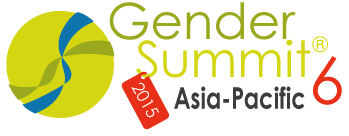GS6 Speakers
Adjunct Professor, Copenhagen Business School (CBS), Politician and Former Member of European Parliament, Denmark.
How to improve the gender dimension through networking (download presentation here ![]() )
)
Plenary Panel 5: Developing Leadership Capacity for Gendered Innovations through Scientific, Technology and Policy Networks
Britta Thomsen is at present adjunct professor at Copenhagen Business School (CBS) and owner of Britta Thomsen Consulting. She was member of the European Parliament from 2004-2014. She was full member of the committee of Industry and Research including vice-chair from 2004-2007. She was also a full member during the whole term of the Committee on Women's Rights and Gender Equality and elected as coordinator of the Group of Socialists and Democrats.
Britta Thomsen was the rapporteur of the Parliament's report on Women and Science in 2008. She has been a speaker on the subject at a variety of conferences. She is collaborating with the European Institute for Gender Equality in Vilnius which is now doing a European survey on women and science. She was originally trained as an Historian MA and has additional courses in Portuguese and Spanish languages from Aarhus University, University of Lisbon and The Nordic Africa Institute in Uppsala, Sweden.
Summary of talk for Gender Summit 6 Asia-Pacific:
All the way up the ladder there is a considerable loss of female research talent, although more women are graduating from universities. A few years ago, this situation was addressed by measures to get more women into science. Today we are aware that this is not enough, we also need to consider the gender dimension in the research and innovation content.
The gender dimension should be adequately integrated in strategies, programmes and projects and followed through all stages of the research cycle. Gender Analysis contributes to excellence, it stimulates new knowledge creation and technologies and results on new products and services that all members of society need and demand. This leads to the discussion of science for and with society and which implies building effective cooperation between the scientific environment, politics and NGOs. The gender dimension could be included in research and innovation by various measures such as promoting structural changes in the organisation of research institutions and in the content and design of research.
Today we have collected a high amount of data and indicators on how to improve gender equality within science and the big challenge is how to apply and improve this material. We need to speed up the process of sharing information, results and experiences to improve the gender dimension. This can be done through networks at both national and transnational level. In Europe we have created very successful network to improve the gender dimension such as for instance the Helsinki-group.

